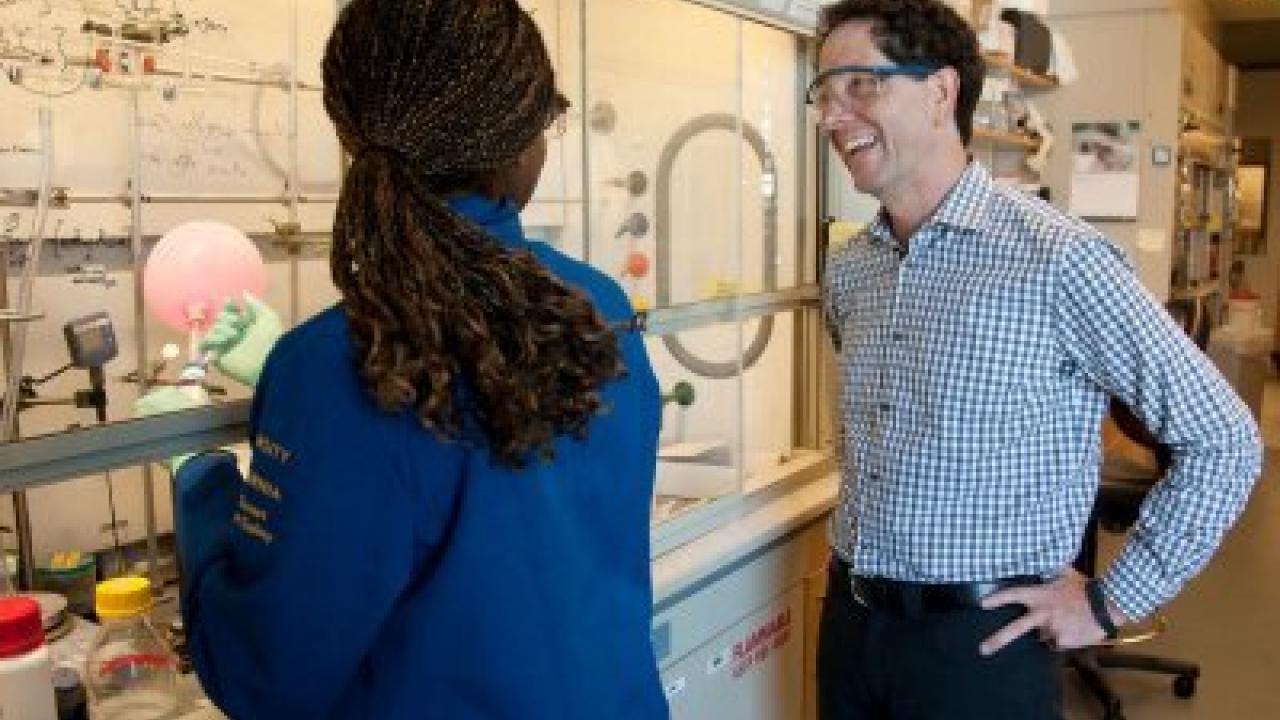
Kevan Shokat speaks with rotation student Chimno Nnadi in his lab at UCSF's Genentech Hall. Photo by Cindy Chew
Researchers are approaching the problem of Ras from a number of different angles – directly attacking the protein, disrupting its signaling and focusing on targets that are triggered by Ras.
Loh and Shannon, for example, are investigating the use of a class of drugs called MEK inhibitors for treatment of JMML.
“MEK is a protein directly downstream of Ras that gets activated when Ras is activated”, Loh said. “We think if we can inhibit MEK, we might be able to put the brakes on Ras and slow down the leukemia.” In a recent breakthrough, Kevan Shokat's team discovered a binding site, or “pocket," on K-Ras where they could design a chemical compound (shown in color) to attach and inhibit its activity. Image courtesy of Shokat Lab
In a recent breakthrough, Kevan Shokat's team discovered a binding site, or “pocket," on K-Ras where they could design a chemical compound (shown in color) to attach and inhibit its activity. Image courtesy of Shokat Lab
Meanwhile, a team led by Kevan Shokat, PhD, chair of the UCSF Department of Cellular and Molecular Pharmacology and a Howard Hughes Medical Institute investigator, is attacking Ras directly.
Shokat’s team made a significant breakthrough in a study published in Nature last fall, developing a method for exploiting a previously unknown “Achilles heel” in K-Ras. The weak point is a newly discovered binding site, or “pocket,” identified by Shokat’s team.
The group designed a chemical compound that fits inside this pocket and inhibits the normal activity of a version of mutant K-Ras implicated in about 7 percent of all lung cancer, while leaving normal versions of the protein untouched. When tested on human lung cancer cells grown in culture, the team’s molecule efficiently killed the Ras-driven cancer cells.
Shokat thinks his team’s chemical compound can be developed into a drug that will be ready for clinical trials in as little as two years.
The group is currently tinkering with their molecule to make it bind to mutant K-Ras more quickly and consistently. “That way, we won’t need to deliver as much of our drug to the human body,” Shokat said.